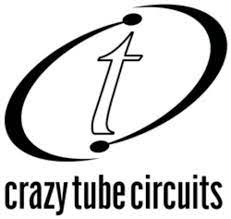AUSTIN GUITAR HOUSE IS PROUD TO BE AN AUTHORIZED DEALER OF

If you ever needed a smooth and liquid fuzz-distortion made for soloing then this pedal is for you.
Combining JFET and MOSFET gain stages we covered a huge gain range with the right amount of sagging compression to give sustain and feedback for days without ever losing note definition. From a low gain edgy overdrive up to a thick and soaring fuzz distortion with fat mids and creamy highs. Flip the gain switch for a little extra gain and high-mid presence and listen to the almost endless harmonics bloom.
"Masquerading as a simple overdrive pedal adorned with 1930s-era sci-fi movie graphics, the Starlight offers a very smooth overdrive using a mix of JFET and MOSFET gain stages. The layout is relatively simple, with the standard array of Volume, Tone and Gain controls. In addition to the familiar controls, a mid-boost switch is nestled close to the Volume and Tone knobs. Using a 2007 Gibson Flying V into a Fender Twin Reverb Reissue, I followed the recommended setting of placing the Gain control somewhere between 7 and 9 o’clock (I had it at 8:30). The first open G chord was infused with an impressive, clear tone. I was taken back a little at how much gain it added at this low setting. Normally, this particular Flying V has a brighter edge when using distorted sounds, but the Starlight wasn’t about to let that happen. Even with the Tone knob maxed, the sound was relatively dark.
The tone is certainly not on the bright end of the spectrum, but it’s a good one. Switching to a 1996 Fender USA Stratocaster helped bring the highs out into the forefront a little bit, but not in any extreme sense. It’s a great tone, but its subdued nature might turn off some players. Coupling it with a bright amplifier (such as the Twin that I was using) can help alleviate that if it’s an issue. Now that the pedal had proven to me that it was capable of restrained, cultured tones, it was time to push it further. Keeping the Strat connected to the Starlight, I started to play around with some higher gain settings. While lead lines and fills kept a snappy, responsive punch, riffing at any setting higher than 2 o’clock caused the tone to loose its consistency. However, even when higher settings caused the tone to muddy up, the attack was brazenly present. This is certainly one of the Starlight’s strong points, if not its strongest. Players with characteristically brighter amps will want to take notice."